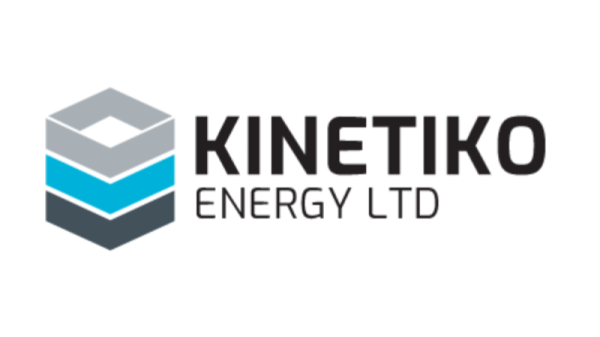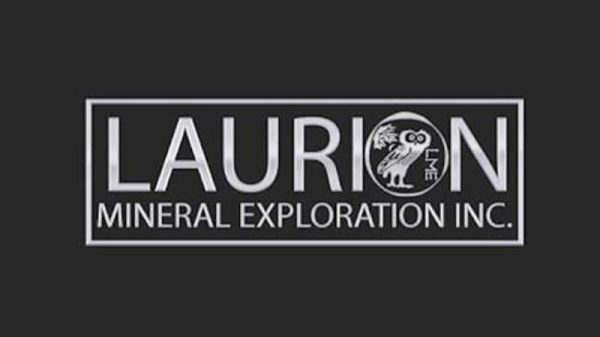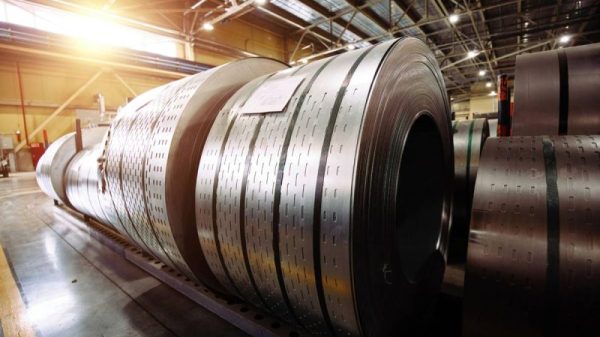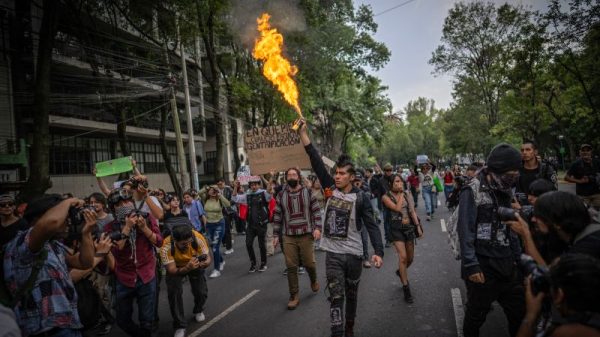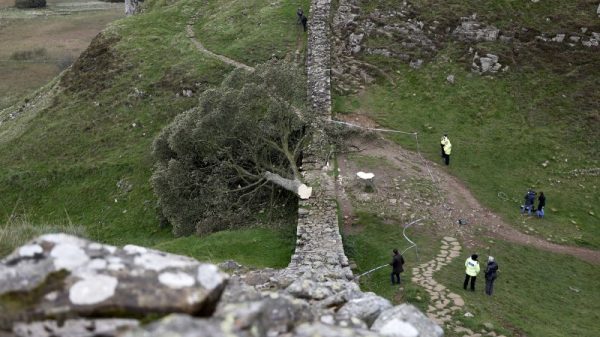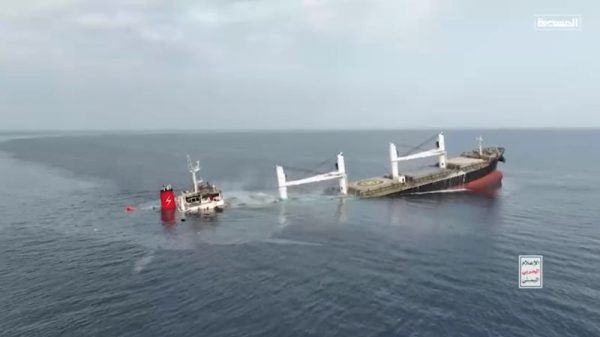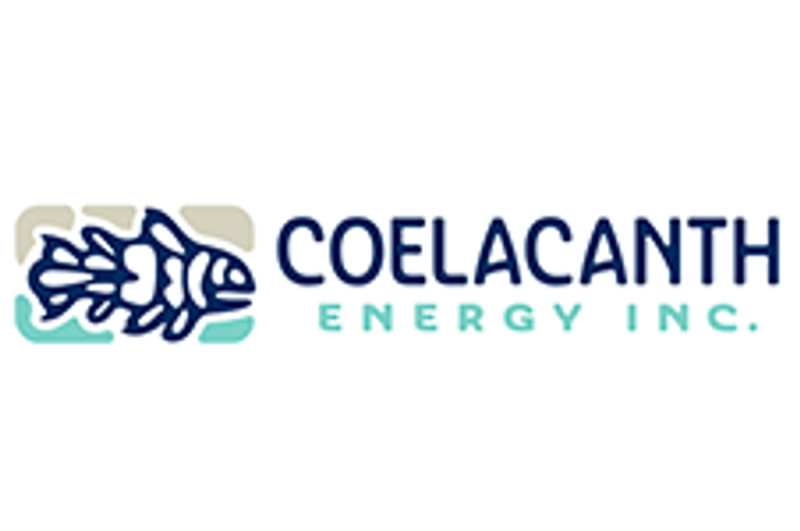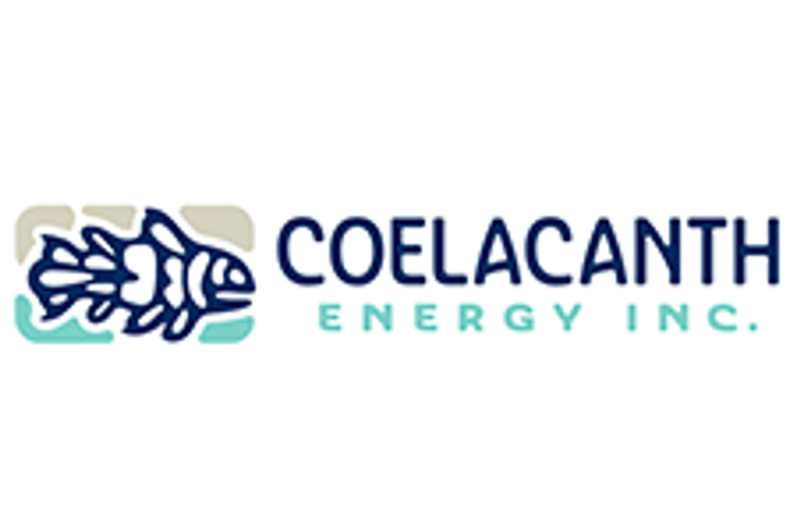

Coelacanth Energy Inc. (TSXV: CEI) (‘Coelacanth’ or the ‘Company’) is pleased to announce its 2024 year-end reserves as independently evaluated by GLJ Ltd. (‘GLJ’) effective December 31, 2024 (the ‘GLJ Report’ or the ‘Report’), in accordance with National Instrument 51-101 (‘NI 51-101’) and the Canadian Oil and Gas Evaluation (‘COGE’) Handbook. All dollar figures are Canadian dollars unless otherwise noted.
Introduction
During 2024, Coelacanth drilled an additional 3 Lower Montney wells on its 5-19 pad and started the construction of pipelines and facilities to allow for the production of all 9 wells on the 5-19 pad to come on production in Q2 2025. The 9 wells consist of 7 Lower Montney wells, 1 Upper Montney well and 1 Basal Montney well that have tested over 11,000 boe/d (flush production) (1). On completion of phase 1 of the facility in May 2025, Coelacanth will have capacity to produce 30.0 mmcf/d of gas plus the concurrent oil production for a combined capacity of approximately 7,500-8,000 boe/d. Phase 2 (adding compression) is scheduled for Q4 2025 and will double capacity.
Coelacanth almost doubled its reserves from 2023 while still only having recognized reserves on less than 10% of its 150 section Montney land block at Two Rivers. A total of 23 combined wells and locations are included in the Report comprised of 13 drilled and completed Montney wells plus 10 Montney undeveloped locations. The 13 existing wells include 8 Lower Montney wells, 4 Upper Montney wells, and 1 Basal Montney well. All 10 undeveloped locations booked were Lower Montney leaving potential to book additional Upper and Basal Montney wells on the same lands. Coelacanth believes it has been conservative in its bookings and, over time, will be able to expand the current reserve base to cover a greater portion of the land base.
The Report includes a total of $148.3 million of future development capital (‘FDC’) of which $33.5 million is in Jan-May of 2025 for phase 1 of the facility. By the end of May, the capital for phase 1 of the facility will have been spent and all of the proved developed non-producing and probable developed non-producing reserves will change to producing status. These adjustments will have a material effect on the Report given the FDC for phase 1 of the facility will be removed (thereby increasing the overall value) and the producing portion of the Report will increase dramatically with wells coming on production. Coelacanth is planning to engage GLJ to provide a mid-year update of the Report to better illustrate the magnitude of the changes.
Coelacanth’s business plan for the Two Rivers Montney Project includes:
- Delineating and establishing production on multiple Montney zones over its extensive land base.
- Accelerating production through pad drilling once initial infrastructure is complete.
- Licensing and constructing additional facilities and pipelines to process future production additions.
Coelacanth is currently:
- Finalizing the construction of Two Rivers East facility to accommodate the 5-19 pad production.
- Licensing additional pads for future development.
- Completing a third-party resource study to aid in well spacing and completion design as well as future delineation.
- Completing a detailed review of Two Rivers for well development and future infrastructure requirements.
Coelacanth is excited to initiate its business plan to systematically develop the property, establish the ultimate reserve recoveries and move the established recoverable resource from land to its established producing reserve base.
Reserve Highlights
Coelacanth is pleased to report material increases in both reserves and value:
- Increased Total Proved plus Probable reserves by 95% to 27.5 million boe from 14.1 million boe.
- Increased Total Proved reserves by 63% to 17.1 million boe from 10.5 million boe.
- Increased Total Proved plus Probable Reserve value (net present value before taxes, discounted at 10%) by 155% to $239.6 million from $93.9 million.
Notes:
(1) See ‘Test Results and Initial Production Rates’.
Reserves Summary
Coelacanth’s December 31, 2024 reserves as prepared by GLJ effective December 31, 2024 and based on the GLJ (2025-01) future price forecast are as follows: (1,4)
| Working Interest Reserves (2) | Tight Oil (Mbbl) |
Shale Natural Gas (Mmcf) |
NGLs (Mbbl) |
Total Oil Equivalent (Mboe) (3) |
| Proved | ||||
| Producing | 344 | 8,097 | 150 | 1,843 |
| Developed non-producing | 1,874 | 38,862 | 720 | 9,071 |
| Undeveloped | 1,137 | 27,324 | 506 | 6,197 |
| Total proved | 3,355 | 74,283 | 1,376 | 17,111 |
| Probable | 2,154 | 44,543 | 825 | 10,403 |
| Total proved & probable | 5,509 | 118,826 | 2,201 | 27,515 |
Notes:
(1) Numbers may not add due to rounding.
(2) ‘Working Interest’ or ‘Gross’ reserves means Coelacanth’s working interest (operating and non-operating) share before deduction of royalties and without including any royalty interest of Coelacanth.
(3) Oil equivalent amounts have been calculated using a conversion rate of six thousand cubic feet of natural gas to one barrel of oil.
(4) Disclosure of Net reserves are included in Company’s Annual Information Form (‘AIF’) dated April 23, 2025 filed on SEDAR+ at www.sedarplus.ca. ‘Net’ reserves means Coelacanth’s working interest (operated and non-operated) share after deduction of royalties, plus Coelacanth’s royalty interest in reserves.
Reserves Values
The estimated future net revenues before taxes associated with Coelacanth’s reserves effective December 31, 2024 and based on the GLJ (2025-01) future price forecast are summarized in the following table: (1,2,3,4)
| Discount factor per year | |||||
| ($000s) | 0% | 5% | 10% | 15% | 20% |
| Proved | |||||
| Producing | 21,615 | 17,655 | 14,827 | 12,765 | 11,220 |
| Developed non-producing | 131,346 | 97,179 | 74,105 | 57,825 | 45,878 |
| Undeveloped | 93,068 | 63,389 | 44,903 | 32,689 | 24,196 |
| Total proved | 246,030 | 178,224 | 133,834 | 103,279 | 81,294 |
| Probable | 221,362 | 147,285 | 105,806 | 80,431 | 63,701 |
| Total proved & probable | 467,391 | 325,509 | 239,640 | 183,710 | 144,995 |
Notes:
(1) Numbers may not add due to rounding.
(2) The estimated future net revenues are stated prior to provision for interest, debt service charges or general administrative expenses and after deduction of royalties, operating costs, estimated well abandonment and reclamation costs and estimated future capital expenditures.
(3) The estimated future net revenue contained in the table does not necessarily represent the fair market value of the reserves. There is no assurance that the forecast price and cost assumptions contained in the GLJ Report will be attained and variations could be material. The recovery and reserve estimates described herein are estimates only. Actual reserves may be greater or less than those calculated.
(4) The after-tax present values of future net revenue attributed to Coelacanth’s reserves are included in Company’s AIF dated April 23, 2025 filed on SEDAR+ at www.sedarplus.ca.
Price Forecast
The GLJ (2025-01) price forecast is as follows:
| Year | WTI Oil @ Cushing ($US / Bbl) |
Edmonton Light Oil ($Cdn / Bbl) |
AECO Natural Gas ($Cdn / Mmbtu) |
Chicago Natural Gas ($US / Mmbtu) |
Foreign Exchange (Cdn$/US$) |
| 2025 | 71.25 | 91.33 | 2.05 | 2.79 | 0.7050 |
| 2026 | 73.50 | 93.32 | 3.00 | 3.70 | 0.7300 |
| 2027 | 76.00 | 96.45 | 3.50 | 4.01 | 0.7500 |
| 2028 | 78.53 | 99.82 | 4.00 | 4.10 | 0.7500 |
| 2029 | 80.10 | 101.80 | 4.08 | 4.18 | 0.7500 |
| 2030 | 81.70 | 103.84 | 4.16 | 4.27 | 0.7500 |
| 2031 | 83.34 | 105.92 | 4.24 | 4.35 | 0.7500 |
| 2032 | 85.00 | 108.04 | 4.33 | 4.45 | 0.7500 |
| 2033 | 86.70 | 110.20 | 4.41 | 4.54 | 0.7500 |
| 2034 | 88.44 | 112.40 | 4.50 | 4.63 | 0.7500 |
| Escalate thereafter (1) | 2.0% per year | 2.0% per year | 2.0% per year | 2.0% per year |
Note:
(1) Escalated at two per cent per year starting in 2034 in the January 1, 2025 GLJ price forecast with the exception of foreign exchange, which remains flat.
Reserve Life Index (‘RLI’)
Coelacanth’s RLI presented below is based on estimated Q4 2024 average production of 1,084 boe per day.
| Reserve Category | RLI |
| Proved plus Probable Reserves | 69.0 |
| Proved Reserves | 42.9 |
Reserves Reconciliation
The following summary reconciliation of Coelacanth’s working interest reserves compares changes in the Company’s reserves as at December 31, 2024 to the reserves as at December 31, 2023 based on the GLJ (2025-01) future price forecast: (1,2)
| Total Proved | Tight Oil | Shale Natural Gas |
NGLs | Total Oil Equivalent |
| (Mbbl) | (Mmcf) | (Mbbl) | (Mboe) (3) | |
| Opening balance | 2,291 | 44,784 | 720 | 10,475 |
| Discoveries | – | – | – | – |
| Extensions and improved recovery | 1,212 | 27,468 | 509 | 6,298 |
| Technical revisions | (28) | 3,663 | 173 | 756 |
| Acquisitions | – | – | – | – |
| Dispositions | – | – | – | – |
| Economic factors | (15) | (297) | (1) | (66) |
| Production | (105) | (1,335) | (24) | (352) |
| Closing balance | 3,355 | 74,283 | 1,376 | 17,111 |
| Proved plus Probable | Tight Oil | Shale Natural Gas |
NGLs | Total Oil Equivalent |
| (Mbbl) | (Mmcf) | (Mbbl) | (Mboe) (3) | |
| Opening balance | 3,038 | 60,432 | 970 | 14,080 |
| Discoveries | – | – | – | – |
| Extensions and improved recovery | 2,599 | 56,330 | 1,043 | 13,031 |
| Technical revisions | (9) | 3,734 | 213 | 825 |
| Acquisitions | – | – | – | – |
| Dispositions | – | – | – | – |
| Economic factors | (13) | (334) | – | (69) |
| Production | (105) | (1,335) | (24) | (352) |
| Closing balance | 5,509 | 118,826 | 2,201 | 27,515 |
Notes:
(1) Numbers may not add due to rounding.
(2) ‘Working Interest’ or ‘Gross’ reserves means Coelacanth’s working interest (operating and non-operating) share before deduction of royalties and without including any royalty interest of Coelacanth.
(3) Oil equivalent amounts have been calculated using a conversion rate of six thousand cubic feet of natural gas to one barrel of oil.
Capital Expenditures
Capital allocation by category is as follows:
| ($000s) | 2024 | 2023 | 2022 |
| Undeveloped land | 765 | 1,006 | 1,164 |
| Acquisitions | 765 | 1,006 | 1,164 |
| Drilling and completion | 38,353 | 61,274 | 9,009 |
| Facilities and related infrastructure | 44,935 | 12,094 | 3,689 |
| Geological, geophysical and other | 444 | 239 | 42 |
| Exploration and development expenditures | 83,732 | 73,607 | 12,740 |
| Total capital expenditures | 84,497 | 74,613 | 13,904 |
Finding and Development Costs (‘F&D’) and Finding, Development and Acquisition Costs (‘FD&A’)
Coelacanth has presented FD&A and F&D costs below:
| 2024 | 2023 | 2022 | 3 Year Cumulative | |||||
| Proved & |
Proved & | Proved & | Proved & | |||||
| ($000’s, except where noted) | Proved | Probable | Proved | Probable | Proved | Probable | Proved | Probable |
| Exploration and development expenditures | 83,732 | 83,732 | 73,607 | 73,607 | 12,740 | 12,740 | 170,079 | 170,079 |
| Change in FDC (1) | (1,713) | 30,469 | 90,598 | 77,759 | 11,400 | 33,748 | 100,285 | 141,976 |
| F&D costs | 82,019 | 114,201 | 164,205 | 151,366 | 24,140 | 46,488 | 270,364 | 312,055 |
| Acquisitions | 765 | 765 | 1,006 | 1,006 | 1,164 | 1,164 | 2,935 | 2,935 |
| FD&A costs | 82,784 | 114,966 | 165,211 | 152,372 | 25,304 | 47,652 | 273,299 | 314,990 |
| Reserve Additions (Mboe) (2) | ||||||||
| Exploration and development | 6,989 | 13,789 | 8,637 | 9,784 | 1,169 | 3,400 | 16,795 | 26,973 |
| Acquisitions | – | – | – | – | – | – | – | – |
| 6,989 | 13,789 | 8,637 | 9,784 | 1,169 | 3,400 | 16,795 | 26,973 | |
| F&D costs ($/boe) | 11.74 | 8.28 | 19.01 | 15.47 | 20.65 | 13.67 | 16.10 | 11.57 |
| FD&A costs ($/boe) | 11.84 | 8.34 | 19.13 | 15.57 | 21.65 | 14.02 | 16.27 | 11.68 |
Notes:
(1) Future development capital (‘FDC’) expenditures required to recover reserves estimated by GLJ. The aggregate of the exploration and development costs incurred in the most recent financial period and the change during that period in estimated future development costs generally may not reflect total finding and development costs related to reserve additions for that period.
(2) Sum of extensions and improved recovery, technical revisions and economic factors in the reserves reconciliation included above.
For Coelacanth’s full NI 51-101 disclosure related to its 2024 year-end reserves please refer to the Company’s AIF dated April 23, 2025 filed on SEDAR+ at www.sedarplus.ca.
Forward-Looking Information
This news release contains forward-looking statements and forward-looking information within the meaning of applicable securities laws. The use of any of the words ‘expect’, ‘anticipate’, ‘continue’, ‘estimate’, ‘may’, ‘will’, ‘should’, ‘believe’, ‘intends’, ‘forecast’, ‘plans’, ‘guidance’ and similar expressions are intended to identify forward-looking statements or information.
More particularly and without limitation, this document contains forward-looking statements and information relating to the Company’s oil, NGLs and natural gas production and reserves and reserves values, capital programs, and oil, NGLs, and natural gas commodity prices. The forward-looking statements and information are based on certain key expectations and assumptions made by the Company, including expectations and assumptions relating to prevailing commodity prices and exchange rates, applicable royalty rates and tax laws, future well production rates, the performance of existing wells, the success of drilling new wells, the availability of capital to undertake planned activities and the availability and cost of labor and services.
Although the Company believes that the expectations reflected in such forward-looking statements and information are reasonable, it can give no assurance that such expectations will prove to be correct. Since forward-looking statements and information address future events and conditions, by their very nature they involve inherent risks and uncertainties. Actual results may differ materially from those currently anticipated due to a number of factors and risks. These include, but are not limited to, the risks associated with the oil and gas industry in general such as operational risks in development, exploration and production, delays or changes in plans with respect to exploration or development projects or capital expenditures, the uncertainty of estimates and projections relating to production rates, costs and expenses, commodity price and exchange rate fluctuations, marketing and transportation, environmental risks, competition, the ability to access sufficient capital from internal and external sources and changes in tax, royalty and environmental legislation. The forward-looking statements and information contained in this document are made as of the date hereof for the purpose of providing the readers with the Company’s expectations for the coming year. The forward-looking statements and information may not be appropriate for other purposes. The Company undertakes no obligation to update publicly or revise any forward-looking statements or information, whether as a result of new information, future events or otherwise, unless so required by applicable securities laws.
Reserves Data
There are numerous uncertainties inherent in estimating quantities of tight oil, shale gas, and NGLs reserves and the future cash flows attributed to such reserves. The reserve and associated cash flow information set forth above are estimates only. In general, estimates of economically recoverable tight oil, shale gas, and NGLs reserves and the future net cash flows therefrom are based upon a number of variable factors and assumptions, such as historical production from the properties, production rates, ultimate reserve recovery, timing and amount of capital expenditures, marketability of oil and natural gas, royalty rates, the assumed effects of regulation by governmental agencies and future operating costs, all of which may vary materially.
Individual properties may not reflect the same confidence level as estimates of reserves for all properties due to the effects of aggregation.
This news release contains estimates of the net present value of the Company’s future net revenue from its reserves. Such amounts do not represent the fair market value of the Company’s reserves.
The reserves data contained in this news release has been prepared in accordance with National Instrument 51-101 (‘NI 51-101’). The reserve data provided in this news release presents only a portion of the disclosure required under NI 51-101. All of the required information will be contained in the Company’s Annual Information Form for the year ended December 31, 2024, filed on SEDAR+ at www.sedarplus.ca.
Reserves are estimated remaining quantities of oil and natural gas and related substances anticipated to be recoverable from known accumulations, as of a given date, based on the analysis of drilling, geological, geophysical and engineering data; the use of established technology, and specified economic conditions, which are generally accepted as being reasonable. Reserves are classified according to the degree of certainty associated with the estimates as follows:
-
Proved Reserves are those reserves that can be estimated with a high degree of certainty to be recoverable. It is likely that the actual remaining quantities recovered will exceed the estimated proved reserves.
-
Probable Reserves are those additional reserves that are less certain to be recovered than proved reserves. It is equally likely that the actual remaining quantities recovered will be greater or less than the sum of the estimated proved plus probable reserves.
Industry Metrics
This news release contains metrics commonly used in the oil and natural gas industry. Each of these metrics is determined by the Company as set out below or elsewhere in this news release. These metrics are ‘F&D costs’, ‘FD&A costs’, and ‘reserve-life index’. These metrics do not have standardized meanings and may not be comparable to similar measures presented by other companies. As such, they should not be used to make comparisons.
Management uses these oil and gas metrics for its own performance measurements and to provide shareholders with measures to compare the Company’s performance over time, however, such measures are not reliable indicators of the Company’s future performance and future performance may not compare to the performance in previous periods.
‘F&D costs’ are calculated by dividing the sum of the total capital expenditures for the year (in dollars) by the change in reserves within the applicable reserves category (in boe). F&D costs, including FDC, includes all capital expenditures in the year as well as the change in FDC required to bring the reserves within the specified reserves category on production.
‘FD&A costs’ are calculated by dividing the sum of the total capital expenditures for the year inclusive of the net acquisition costs and disposition proceeds (in dollars) by the change in reserves within the applicable reserves category inclusive of changes due to acquisitions and dispositions (in boe). FD&A costs, including FDC, includes all capital expenditures in the year inclusive of the net acquisition costs and disposition proceeds as well as the change in FDC required to bring the reserves within the specified reserves category on production.
The Company uses F&D and FD&A as a measure of the efficiency of its overall capital program including the effect of acquisitions and dispositions. The aggregate of the exploration and development costs incurred in the most recent financial year and the change during that year in estimated future development costs generally will not reflect total finding and development costs related to reserves additions for that year.
‘Reserve life index’ or ‘RLI’ is calculated by dividing the reserves (in boe) in the referenced category by the latest quarter of production (in boe) annualized. The Company uses this measure to determine how long the booked reserves will last at current production rates if no further reserves were added.
BOE Conversions
BOE’s may be misleading, particularly if used in isolation. A BOE conversion ratio of 6 Mcf: 1 Bbl is based on an energy equivalency conversion method primarily applicable at the burner tip and does not represent a value equivalency at the wellhead.
Abbreviations
| Bbl | barrel |
| Mbbl | thousands of barrels |
| MMbtu | millions of British thermal units |
| Mcf | thousand cubic feet |
| MMcf | million cubic feet |
| NGLs | natural gas liquids |
| BOE | barrel of oil equivalent |
| MBOE | thousands of barrels of oil equivalent |
| WTI | West Texas Intermediate at Cushing, Oklahoma |
Test Results and Initial Production Rates
The 5-19 Lower Montney well was production tested for 9.4 days and produced at an average rate of 377 bbl/d oil and 2,202 mcf/d gas (net of load fluid and energizing fluid) over that period which includes the initial cleanup where only load water was being recovered. At the end of the test, flowing wellhead pressure and production rates were stable.
The A5-19 Basal Montney well was production tested for 5.9 days and produced at an average rate of 117 bbl/d oil and 630 mcf/d gas (net of load fluid and energizing fluid) over that period which includes the initial cleanup where only load water was being recovered. At the end of the test, flowing wellhead pressure and production rates were stable.
The B5-19 Upper Montney well was production tested for 6.3 days and produced at an average rate of 92 bbl/d oil and 2,100 mcf/d gas (net of load fluid and energizing fluid) over that period which includes the initial cleanup where only load water was being recovered. At the end of the test, flowing wellhead pressure and production rates were stable.
The C5-19 Lower Montney well was production tested for 5.8 days and produced at an average rate of 736 bbl/d oil and 2,660 mcf/d gas (net of load fluid and energizing fluid) over that period which includes the initial cleanup where only load water was being recovered. At the end of the test, flowing wellhead pressure and production rates were stable.
The D5-19 Lower Montney well was production tested for 12.6 days and produced at an average rate of 170 bbl/d oil and 580 mcf/d gas (net of load fluid and energizing fluid) over that period which includes the initial cleanup where only load water was being recovered. At the end of the test, flowing wellhead pressure and production rates were stable.
The E5-19 Lower Montney well was production tested for 11.4 days and produced at an average rate of 312 bbl/d oil and 890 mcf/d gas (net of load fluid and energizing fluid) over that period which includes the initial cleanup where only load water was being recovered. At the end of the test, flowing wellhead pressure was stable, and production was starting to decline.
The F5-19 Lower Montney well was production tested for 4.9 days and produced at an average rate of 728 bbl/d oil and 1,607 mcf/d gas (net of load fluid and energizing fluid) over that period which includes the initial cleanup where only load water was being recovered. At the end of the test, flowing wellhead pressure and production rates were stable.
The G5-19 Lower Montney well was production tested for 7.1 days and produced at an average rate of 415 bbl/d oil and 1,489 mcf/d gas (net of load fluid and energizing fluid) over that period which includes the initial cleanup where only load water was being recovered. At the end of the test, flowing wellhead pressure and production rates were stable.
The H5-19 Lower Montney well was production tested for 8.1 days and produced at an average rate of 411 bbl/d oil and 1,166 mcf/d gas (net of load fluid and energizing fluid) over that period which includes the initial cleanup where only load water was being recovered. At the end of the test, flowing wellhead pressure was stable and production was starting to decline.
A pressure transient analysis or well-test interpretation has not been carried out on these nine wells and thus certain of the test results provided herein should be considered to be preliminary until such analysis or interpretation has been completed. Test results and initial production rates disclosed herein, particularly those short in duration, may not necessarily be indicative of long-term performance or of ultimate recovery.
Any references to peak rates, test rates, IP30, IP90, IP180 or initial production rates or declines are useful for confirming the presence of hydrocarbons, however, such rates and declines are not determinative of the rates at which such wells will continue production and decline thereafter and are not indicative of long-term performance or ultimate recovery. IP30 is defined as an average production rate over 30 consecutive days, IP90 is defined as an average production rate over 90 consecutive days and IP180 is defined as an average production rate over 180 consecutive days. Readers are cautioned not to place reliance on such rates in calculating aggregate production for the Company.
For further information, please contact:
Coelacanth Energy Inc.
2110, 530 – 8th Ave SW
Calgary, Alberta T2P 3S8
Phone: (403) 705-4525
www.coelacanth.ca
Robert Zakresky
President and Chief Executive Officer
Nolan Chicoine
Vice President, Finance and Chief Financial Officer
Neither the TSX Venture Exchange nor its Regulation Services Provider (as that term is defined in the policies of the TSX Venture Exchange) accepts responsibility for the adequacy or accuracy of this release.

To view the source version of this press release, please visit https://www.newsfilecorp.com/release/249585
News Provided by Newsfile via QuoteMedia

